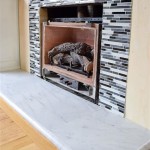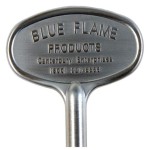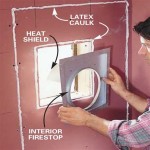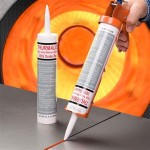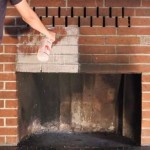```html
Dual-Sided Fireplaces: A Focal Point of Design and Efficiency
Dual-sided fireplaces, also known as see-through or peninsula fireplaces, represent a sophisticated architectural feature that enhances the ambiance and functionality of a space. These fireplaces, characterized by their ability to radiate heat and offer a visual focal point in two separate rooms or distinct areas within a single open-concept space, are gaining popularity in modern homes and commercial settings. Their design versatility and heating efficiency make them a valuable addition to a variety of architectural styles.
Unlike traditional fireplaces that are enclosed on three sides and emit heat and light into a single room, dual-sided fireplaces offer a unique advantage by creating a visual connection between adjacent spaces. This open design allows for the warmth and aesthetic appeal of the fire to be shared, promoting a sense of unity and openness. The architectural integration of a dual-sided fireplace often involves careful consideration of room layouts, traffic flow, and overall design aesthetics to maximize its impact and functionality.
The selection of a dual-sided fireplace requires careful consideration of several factors, including the fuel type, venting system, BTU output, and aesthetic design. Fireplace options range from wood-burning models that provide a traditional and rustic appeal to gas and electric models that offer convenience and ease of use. The choice of fuel type often depends on personal preferences, local regulations, and the availability of fuel sources. Furthermore, the venting system must be appropriately sized and installed to ensure proper combustion and safe operation. The BTU output should be carefully calculated to match the heating needs of the spaces being served by the fireplace.
Key Point 1: Architectural and Design Considerations
The integration of a dual-sided fireplace into a building's design requires careful planning and architectural considerations. The placement of the fireplace should complement the existing layout and enhance the overall flow of the space. Architects and designers often use dual-sided fireplaces to define separate zones within an open-concept design, creating a sense of privacy and intimacy without completely closing off the spaces. For example, a dual-sided fireplace could be strategically placed between a living room and a dining room, providing a visual divider while still allowing for interaction and connectivity between the two areas. The height and width of the fireplace opening should also be carefully considered to ensure that it is proportionate to the size of the rooms it serves.
The selection of materials for the fireplace surround can significantly impact the overall aesthetic appeal. Common materials include stone, brick, tile, and metal, each offering a unique texture and visual character. The choice of materials should complement the existing interior design and create a cohesive look and feel. The fireplace surround can also incorporate features such as mantels, shelving, and decorative accents to further enhance its architectural presence. Glass doors or screens are often used to contain sparks and embers, as well as to improve the energy efficiency of the fireplace. These doors can be customized to match the desired aesthetic and functional requirements.
Furthermore, the design of the fireplace should take into account the viewing angles from different points within the rooms. The fireplace should be positioned so that it can be easily viewed and enjoyed from multiple seating areas. The use of a raised hearth can improve visibility and create a more inviting atmosphere. The incorporation of lighting elements, such as recessed lights or spotlights, can further enhance the visual impact of the fireplace and create a warm and inviting ambiance.
Key Point 2: Fuel Options and Heating Efficiency
Dual-sided fireplaces are available in a variety of fuel options, each with its own advantages and disadvantages. Wood-burning fireplaces offer a traditional and authentic experience, providing a natural flame and the aroma of burning wood. However, they require a dedicated chimney and regular maintenance, including cleaning and ash removal. Gas fireplaces are a more convenient option, offering instant ignition and adjustable flame settings. They can be fueled by natural gas or propane and typically require less maintenance than wood-burning fireplaces. Electric fireplaces are the most convenient option, requiring no venting and offering a variety of flame effects and heat settings. They are also the most energy-efficient option, as they convert nearly 100% of the electricity into heat.
The heating efficiency of a dual-sided fireplace depends on several factors, including the fuel type, the design of the firebox, and the venting system. Wood-burning fireplaces typically have lower heating efficiency than gas or electric fireplaces, as a significant amount of heat is lost through the chimney. Gas fireplaces are more efficient, as they use a sealed combustion chamber to minimize heat loss. Electric fireplaces are the most efficient, as they use a heating element to directly heat the air. The BTU output of the fireplace should be carefully matched to the heating needs of the spaces being served. A fireplace with too low of a BTU output will not provide sufficient heat, while a fireplace with too high of a BTU output may overheat the space.
The incorporation of features such as insulated fireboxes and sealed glass doors can further improve the heating efficiency of a dual-sided fireplace. Insulated fireboxes help to retain heat within the combustion chamber, while sealed glass doors prevent heat from escaping into the room. These features can significantly reduce energy consumption and improve the overall comfort of the space. Regular maintenance, such as cleaning the chimney or replacing the gas jets, is also essential for maintaining optimal heating efficiency.
Key Point 3: Installation and Safety Considerations
The installation of a dual-sided fireplace is a complex process that requires professional expertise. The installation must comply with local building codes and regulations, as well as the manufacturer's specifications. The venting system must be properly sized and installed to ensure proper combustion and safe operation. The fireplace must be securely anchored to the building structure to prevent movement or collapse. The electrical connections must be made by a qualified electrician to ensure safety and proper functionality. A professional installer will have the knowledge and experience to ensure that the fireplace is installed correctly and safely.
Safety is a paramount concern when installing and operating a dual-sided fireplace. Carbon monoxide detectors should be installed in the vicinity of the fireplace to alert occupants to the presence of this odorless and colorless gas. Smoke detectors should also be installed to provide early warning of a fire. The fireplace should be regularly inspected for any signs of damage or wear. The chimney should be cleaned annually to remove creosote buildup, which can pose a fire hazard. The fireplace should never be left unattended while in operation, and flammable materials should be kept a safe distance away. Children and pets should be supervised around the fireplace to prevent burns or other injuries.
Furthermore, the selection of appropriate safety features, such as spark screens and tempered glass doors, is essential for preventing accidents. Spark screens prevent embers from escaping the firebox, while tempered glass doors protect occupants from direct contact with the flames. These features can significantly reduce the risk of burns and other injuries. Regular maintenance and adherence to safety guidelines are crucial for ensuring the safe and enjoyable operation of a dual-sided fireplace.
In addition to these key points, the long-term maintenance of a dual-sided fireplace is vital for ensuring its continued performance and longevity. Regular cleaning, inspection, and repairs are essential for preventing problems and maintaining optimal efficiency. By addressing these aspects, homeowners and building managers can ensure that their dual-sided fireplace remains a valuable and attractive feature of their space for years to come.
```:strip_icc()/101650552-e405da465bcf430c8a00a965d349be86.jpg?strip=all)
Two Sided Fireplaces

Pros And Cons Of Double Sided Fireplace Modus Fireplaces

Pros And Cons Of Double Sided Fireplace Modus Fireplaces
:strip_icc()/101878383-94197133bc5c4d6ab40663768b12d3af.jpg?strip=all)
Two Sided Fireplaces

Double Sided Fireplaces Designer French Suspended Wood Heaters

13 Examples Of How To Include A Double Sided Fireplace Into Your Home

Flex 104db Bx2 Double Sided Fireplace Insert Ecosmart Fire

23 Luxurious Double Sided Fireplaces Fireplace Photos

Double Sided Fireplace Insert 1050 Jetmaster Wood Burning

Double Sided Fireplace Design Ideas



